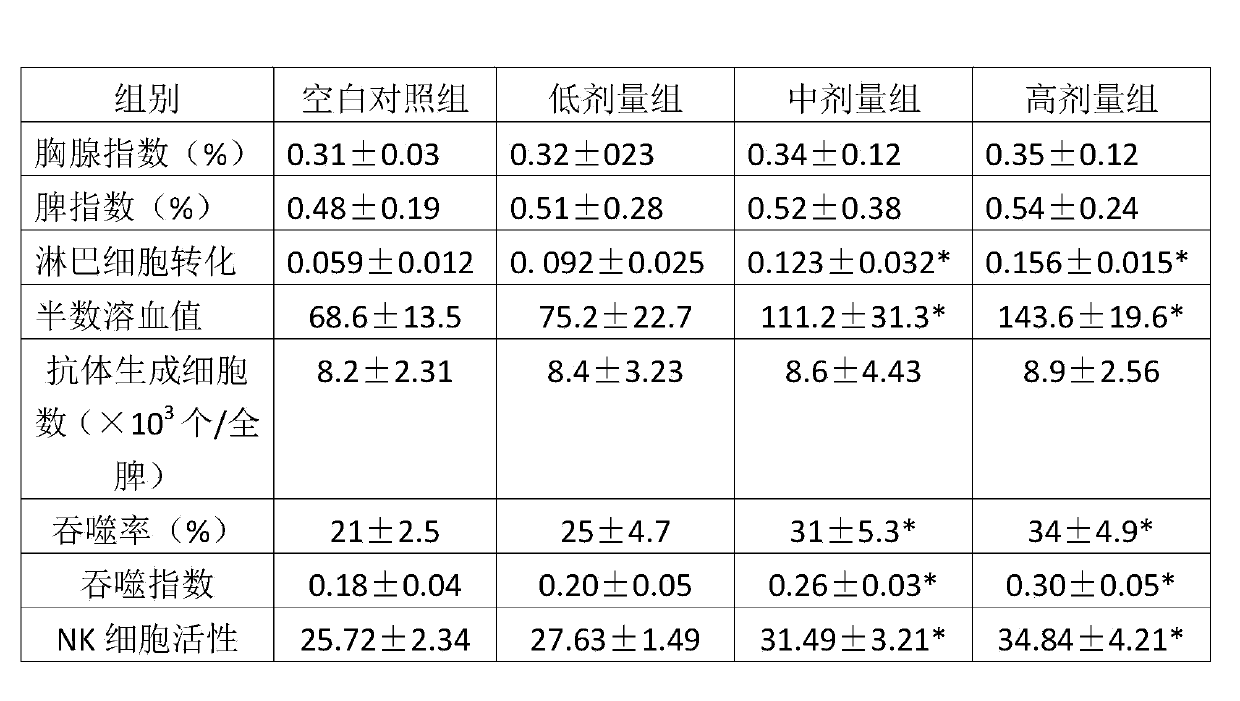Lactobacillus rhamnosus and application thereof
A technology of rhamnose and lactobacillus, applied in the field of microorganisms, can solve the problem of Lactobacillus rhamnosus bacteriostasis and immunity enhancement without relevant reports, and achieve the effect of enhancing immunity, improving lymphocyte transformation, and strong bacteriostatic ability. Effect
- Summary
- Abstract
- Description
- Claims
- Application Information
AI Technical Summary
Problems solved by technology
Method used
Image
Examples
Embodiment 1
[0016] Example 1 Screening and Identification of Lactobacillus rhamnosus
[0017] Collect the middle and rear parts of fresh feces from healthy adults, mash the feces with a sterile glass rod, add 10 times the weight of PBS buffer, shake vigorously for 30 minutes, centrifuge at 2000g for 5min, and collect the supernatant; centrifuge the supernatant at 5000g for 10min, collect Precipitate; wash the precipitate twice with PBS buffer; add a small amount of PBS buffer to fully suspend the precipitate; spread the suspension on the MRS selective medium added with calcium carbonate, and culture anaerobically at 37°C for 48 hours; select large colonies and fast growth strains were further streaked and purified.
[0018] One isolated strain was named YJM-L01. The colonies are generally round or nearly round, with neat edges, and the colony size is generally 2-3 mm, milky white. From the physiological and biochemical identification results described in the table below, the bacterium w...
Embodiment 2
[0022] Embodiment 2: the Lactobacillus rhamnosus YJM-L01 acid resistance and bile salt resistance experiment of screening
[0023] 2.1 Acid resistance test
[0024] Adjust the pH value of the MRS liquid medium to 2.0, 3.0, and 4.0; sterilize at 121°C for 15 minutes; inoculate the activated Lactobacillus rhamnosus into the cooled medium according to the inoculation amount of 2%, and place it at a constant temperature of 37°C Cultivate in an incubator, shake well every 30 minutes, take samples at 0h, 1h, and 2h respectively, and count the plate to determine the number of viable bacteria. The results are shown in Table 1.
[0025] Table 2: Acid resistance test of Lactobacillus rhamnosus
[0026]
[0027] As can be seen from Table 2, after the Lactobacillus rhamnosus screened by the present invention is cultivated in the MRS medium of pH2.0 for 1h, the live bacteria rate is as high as 80%, thereby illustrating that the bacterial strain has stronger acid tolerance and can effec...
Embodiment 3
[0037] Example 3 Lactobacillus rhamnosus inhibits Escherichia coli 0157: H7 experiment
[0038] Lactobacillus rhamnosus of the present invention is inoculated in the MRS liquid culture medium, after cultivating 18h, by measuring OD 500 The value adjusts the number of viable bacteria to be about 5×10 8 cfu / mL. At the same time, Escherichia coli was inoculated in nutrient broth, cultured at 37°C for 18 hours, and the number of viable bacteria was adjusted to 1×10 6 cfu / mL. Cool the nutrient agar medium to about 40°C and pour it into a sterile petri dish. After solidification, absorb 1mL of E. coli bacteria solution and spread it evenly on the surface of the plate. Cultivate colonies at 37°C for 30 minutes. The hole is 3mm deep. Inject the adjusted concentration of bacterial solution to the full well, incubate in a microaerobic environment at 37°C for 48 hours to observe the results, and measure the size of the inhibition zone.
[0039] Lactobacillus rhamnosus has an inhibit...
PUM
| Property | Measurement | Unit |
|---|---|---|
| Diameter | aaaaa | aaaaa |
Abstract
Description
Claims
Application Information
 Login to View More
Login to View More - R&D
- Intellectual Property
- Life Sciences
- Materials
- Tech Scout
- Unparalleled Data Quality
- Higher Quality Content
- 60% Fewer Hallucinations
Browse by: Latest US Patents, China's latest patents, Technical Efficacy Thesaurus, Application Domain, Technology Topic, Popular Technical Reports.
© 2025 PatSnap. All rights reserved.Legal|Privacy policy|Modern Slavery Act Transparency Statement|Sitemap|About US| Contact US: help@patsnap.com



